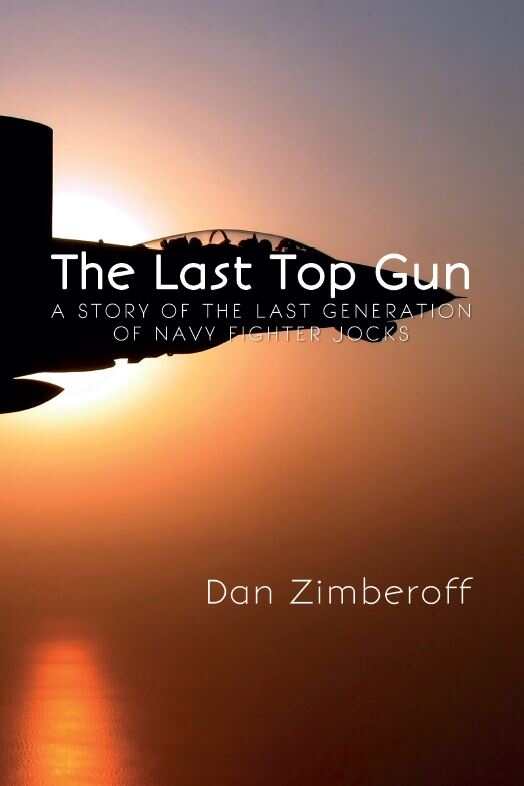The Last Top Gun
A Story Of The Last Generation Of Navy Fighter Jocks
A navy pilot reminisces about his days in the service in this lively, testosterone-driven debut novel.
In retired naval captain Dan Zimberoff’s autobiographical fiction debut, The Last Top Gun, an older pilot recalls his exploits for two trainees. With gripping action sequences and coarse talk, the novel vividly reveals the reality of naval service in the 1980s and 1990s, its tone vacillating between nostalgia and critique.
Commander Eric “Spyder” Greene, now a United States Navy reservist and civilian lawyer, has fond memories of active service but realizes his time has passed: “Flying in the navy was a young man’s gig…Commander Greene’s cockpit expiration date had lapsed.” Unaware that they are calling him a dinosaur and sexist behind his back, Greene relates his tales of boyish hijinks and Pacific travels for young officers Rolls and Drone (the latter being one of an increasing number of female recruits), beginning with his first flight at age twenty-five.
Nicknames, banter, and drunken shenanigans reinforce the military setting. Characters go by names like Tank, Flash, and Trapper, trading quips such as, “Damn, Scout. What’s got you so cheery at this god-awful time of the morning?” Many officers (including one or two married ones) engage in licentious behavior, especially on an inebriated tour of Filipino bars and brothels. Although most of the action comes through in Spyder’s experiences, the novel contrasts others’ mishaps to give a feeling of lucky escape. For instance, one scene shows Willy and Bucket crash-landing and ending up in a hospital, and Spyder concludes with the tragic story of Otter and Austin, who failed to get out in time. Such vignettes add drama but might detract from the primacy of Spyder’s story.
Zimberoff puts readers right in the cockpit with Spyder during missions, not only detailing technology and radio chatter, but also conveying the thrill of flight: “He prized the opportunity to view earth from the vantage of sky and heaven…Spyder often looked down upon thousands of schools, churches, synagogues, businesses, and millions of people and thought how small the planet could be.” The author capably alternates present-day dialogue with chapters in the past, though sometimes flashbacks could be introduced more subtly, rather than, for example, “Spyder wanted to continue talking about his time in VF-1.”
At times, the novel lacks a clear story line; instead, it seems like a string of repetitive missions interspersed with debauches during the aircraft carrier’s Asian stop-offs. Background information is not always conveyed naturally, but is delivered in asides; for instance, “The navy emphasized compartmentalization heavily in flight training.” The book’s glossary, including acronyms, is a welcome resource. Still, jargon can occasionally obscure meaning, as in, “Slamming the Tomcat’s throttles to mil, he banked the jet on its side and yanked six g’s to put the bogeys on their nose.”
By interweaving contemporary observations and flashbacks to wild days flying F-14 Tomcats, Zimberoff shows how the navy has evolved to be more inclusive. “It’s not the same male-bonding, testosterone-driven navy anymore!” Drone insists. Top Gun fans will get the full story here. Best of all, fifty percent of profits go to veterans’ charities.
Reviewed by
Rebecca Foster
Disclosure: This article is not an endorsement, but a review. The publisher of this book provided free copies of the book and paid a small fee to have their book reviewed by a professional reviewer. Foreword Reviews and Clarion Reviews make no guarantee that the publisher will receive a positive review. Foreword Magazine, Inc. is disclosing this in accordance with the Federal Trade Commission’s 16 CFR, Part 255.

